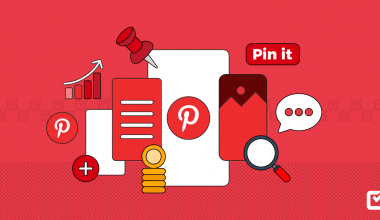One way to put it is that creating a user persona is a step further after identifying who your target audience is and what they want. A user or buyer persona is a research-based, imaginary profile that describes a target audience. It helps businesses understand and empathize with their customers so they can better serve them. Continue reading if you want to know more about user persona and why it’s important because not everyone has got one, trust me.
User Persona- What Is It?
A user persona is a fictional representation of your ideal customer. It is a profile of imagined persons who represent a company’s primary customer base. User personas are created as if the individual were non-fiction, but at the same time, they also reflect common characteristics shared by a group of individuals. They are semi-fictional in the sense that they do not represent a specific person, but their qualities should be obtained from observations of real-world users.
User personas are designed to provide a trustworthy and realistic representation of how a company might expect a group of individuals to interact with a product, service, or campaign. The aim of a user persona is the same whether it is called a buyer persona or a marketing persona or a customer profile
Why You Need to Create a User Persona
To tackle a true user challenge, you must first create a clear problem statement; to create this problem statement, you must first understand your users and their demands.
Knowing your target market can help you choose features and design elements that will make your product or service more useful. A persona helps you understand who your target audience is by answering the following questions:
Who are my ideal customers?
What are their behavioral patterns?
What are their needs and goals?
Their present concerns and pain points in the given context?
Understanding your users’ or customers’ demands is critical to creating a successful product. Personas that are well-defined will help you detect and communicate user needs more effectively. It will also assist you in describing the people who use your product, which is critical to your overall value proposition.
Ultimately, personas aid in strategic planning and making sound design decisions. They assist the product team remember real users, which helps to focus efforts and establish empathy.
Read Also: Buyer’s Journey: Meaning, Stages & How to Implement in Sales Process
Features of User Persona
Before we go into how to create your own user persona, let’s go through certain features to think about. After you’ve gathered enough qualitative and quantitative data, categorize it into persona groups that represent your ideal clients. Furthermore, remember to focus on the key demands of the most important user groups—you can’t and shouldn’t strive to be everything to everyone!
Once you’ve established your user groups, you may transform them into user personas. Let’s take a look at the four characteristics that make up a user persona.
#1. Header
The header includes a fictitious name, an image, and a phrase that outlines what is most important to the persona in relation to your product. These characteristics aid in boosting memorability and keeping your design team focused on the users for whom the product is being built.
This initial stage may appear straightforward, but these characteristics ensure that your persona is memorable, keeping the design team focused on who they are developing for.
#2. A demographic profile
In general, the demographic profile gives genuineness to a user persona, increasing empathy when examining user wants and aspirations. While the name and image are ready, the demographic information must be accurate and based on user research. Personal background, professional background, user environment, and psychographics are the four primary components of the demographic profile.
Personal history
Age, gender, ethnicity, education, personal group, and family status are all part of the personal background history.
Professional experience
Details such as employment occupation, income level, and work experience are included in the professional background.
The user’s environment
The user environment represents the user’s physical, social, and technological setting. This section is meant to answer queries such as: What technical devices are available to users? Do they spend most of their time in a corporate office or at home? And how frequently do they work with others?
Psychographics
Psychographics incorporates information such as attitudes, interests, motives, and pain points. Creating a psychographic profile helps you understand why your users behave the way they do, including why they use your product.
#3. Ultimate goals
The ultimate goal is the motivating factor that encourages action and answers the question: what do users want or need to accomplish by utilizing your product? Goals are the major motivators for your users and determine what the persona wants or needs to accomplish.
#4. Scenario
This section entails a”day-in-the-life” story that illustrates how a person might engage with your product in a certain environment to reach his or her ultimate goal(s). The scenario usually specifies when, where, and how the story takes place. They are often written from the persona’s point of view and describe potential usage scenarios.
How to Create a Good User Persona
While buyer personas are an excellent tool, many people wonder how to create one. The first step is to conduct research. If you presume who your customers are, you will be one of the many new products that fail each year. Using best practices will improve the effectiveness of your user personas.
#1. Carry out a thorough research
You should describe your project’s aim. Are you trying to promote a new product, test a concept, or simply identify your target audience? A clear purpose will direct your study and data collection methods.
Market research surveys are an excellent way to learn about the demographics, psychographics, and behavior patterns of various client categories. Other market research sites can assist you in getting a better understanding of what concepts people appreciate and are willing to buy. Interviews, observations, and customer feedback will all contribute to your research.
Read about USER RESEARCH: Meaning, Example, Method, Tools & Course
#2. Examine the data
You will discover several customer traits based on your study, but only a few of these customers will wish to buy from you. Depending on the objectives of your project, limit your groups to 3 to 4 because too many groups are too complex or too complicated for practical application.
#3. Create real-time personas
Now is the moment to collaborate with your team to come up with names, important demographics, stock images, and challenges for each persona. Each of your identities will come to life as a result of your research and imagination.
Ensure to concentrate on creating personas that match your ideal consumer and project objectives. Also, include things that will help you understand and empathize with your audience, not just describe them. They should be brief, relevant, and easy to recall.
Personas allow you to quickly and thoroughly understand your B2C or B2B consumer. You may also take them to the next level by following them through each stage of the buyer’s journey to learn more about their persona.
Who Uses User Persona?
To create a persona, as previously mentioned, you must first ask yourself in-depth questions about your potential clients, and this exercise alone will help you notice elements you missed earlier. To answer the question, the following department can utilize creating a user persona.
- Customer Service– Personas can be used by customer service support teams to better serve users. Your support crew will be able to exhibit greater empathy if they are trained on the difficulties your customers are attempting to solve with your product and the frustration they experience when things don’t work out. When dealing with a dissatisfied customer, a little compassion can go a long way.
- Product Development- When developing product roadmaps, product development might make use of user personas. This is because it will assist them in identifying and prioritizing adjustments to your offering depending on what your customers require.
- Sales Team– Buyer personas can also assist your sales team in developing relationships with prospective buyers. Your sales team will be a lot more productive if they understand what the prospect is going through and are prepared to solve their worries.
- Marketing– Buyer personas can be used in marketing to develop effective tactics. A user persona, for example, is essential when developing a content marketing strategy. They aid in the focus of keyword research efforts and serve as a reference while writing material. They can also assist in identifying and prioritizing promotional initiatives.
User Persona Examples
#1. Personas with specific goals:
A goal-directed persona is concerned with the strategy or approach that a user employs to address a problem. You want to know how a user would use or engage with a product by developing the procedures and workflows that a user would take. As a result, this user persona is related to user experience (UX) and product development.
#2. Personas based on roles:
A persona based on roles knows where a persona is within an organization and how it influences behavior and decision-making. This user persona seeks to widen the perspective from a goal-oriented approach to one that considers how a job function and environment may affect the demands of a product or service.
#3. Engaging personas:
Engaging user personas are a comprehensive perspective of a persona that provides designers with as much information as possible to work with. This persona has been built out with traits spanning from emotions and social background to psychology. The emphasis is on telling stories that bring the persona to life. This method improves design processes by assisting teams in actually imagining a person, resulting in a better product.
Why is a User Persona Important?
A user persona is required to help guide any brainstorming process. A persona can assist you in understanding how a user behaves, what they encounter, and what their goals are. It instills empathy in your staff, allowing them to focus their efforts. Understanding multiple personas allows a firm to recognize different wants and expectations, as well as how to cater to them.
What is the Purpose of User Personas?
Creating a user persona provides a point of reference throughout the development cycle, assisting in ensuring that progress fits with true user needs. By asking questions like “How would Nathan, Noel, etc, feel, react, experience, or behave if A feature B or C is changed?” you prioritize empathy with the user over internal business demands or preferences.
Summary
A user persona is an essential tool for obtaining insight into the psychological processes of audiences and assisting organizations in making decisions that faithfully represent user requirements. Even though they require completing research, in the end, they assist to satisfy the needs of your customers and relieve the pain points they experience.
Related Posts
- TARGETING IN MARKETING: Definition, Importance, Strategy & How to Use It
- SOCIAL MEDIA MARKETING STRATEGY 2023: A detailed guide(+free template)
- WHAT IS ANGEL INVESTING: Definition, How It Works & Best Platforms
- CUSTOMER PERSONA: Definition, Example & Importance
Reference
- Airfocus.com
- Interaction-desgn






